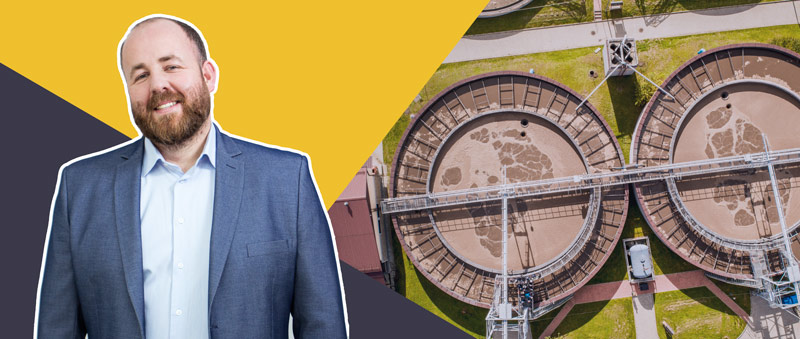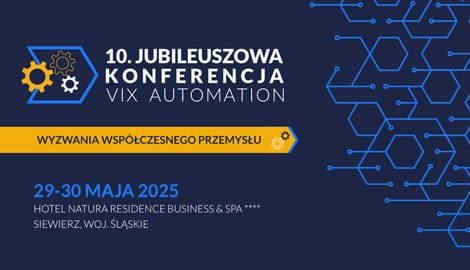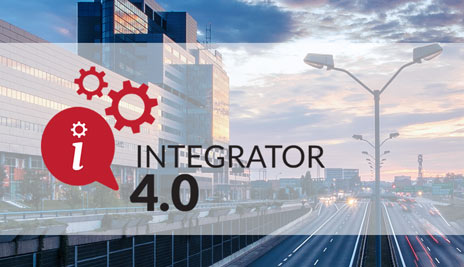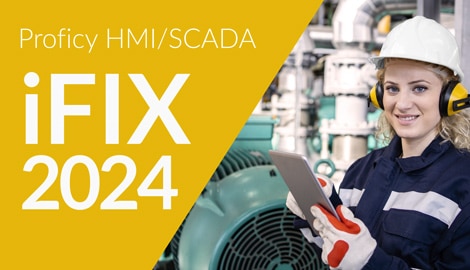Interview: SCADA solutions in water and wastewater industry
GE Digital solutions, including those of the SCADA type, are perfect for all types of production plants, both in Poland and around the world. You can see their diversity here. One of the main industries where Proficy SCADA iFIX and Proficy Historian are most often implemented is the water and sewage industry - in the last few years we have been particularly active in this type of projects, getting to know the processes inside out. The supervisor of most of these projects is Key Account Manager at VIX Automation - Grzegorz Stawarz.

VIX Automation: How did it happen that so many water and wastewater companies turn to VIX Automation for services based on GE Digital products?
Grzegorz Stawarz: A few years ago, we completed a couple of successful water and sewerage implementations. Some of them - in cooperation with our trading partners, others - by ourselves. A kind of snowball effect was created, further implementations and purchases appeared quickly. I suspect it was largely due to...
Word of mouth marketing?
That's exactly what I meant. One person told the other, the other told the another one... It is known that people in the industry know each other - they meet at conferences and trade shows, they often visit each other. We also use this form during our conferences. We show the guests iFIX or other solutions based on GE Digital products in action, live. Of course, the guests come from various industries, so you can suspect that those from the paper industry are a bit bored watching the dairy industry - but some applications are universal, we are showing the software's capabilities. We always have very positive feedback from reference visits. Even from such different industries as oil and... brewing. In the case of water and sewage treatment plants visits, there is another aspect - most industrial plants have their own small on-site wastewater treatment plants. The last reference visit during our conference at SEWiK Tatrzańska Komunalna Grupa Kapitałowa opened the eyes of many customers to the new applications of iFIX in their plants. Lots of new ideas popped up.
Does it happen to take a client to another water treatment plant - not during the conference?
Naturally. We have very good relations with our clients, in the case of water and sewage industry, the aspect of fighting for competitiveness and possible technology spying is basically eliminated, and our clients share their knowledge, experience and results willingly. Such dedicated reference visits are therefore not something new. For example in SEWiK in Zakopane, an application created on the iFIX system can be previewed during an educational path.
It is very nice, that the software not only works well in terms of technology, but is also so attractive for the customers, that they want to tell the others about it.
You mentioned on-site small sewage treatment systems – is it a large percentage of implementations?
Relatively yes. The focus on ecology and sustainable development of enterprises is not only the result of legal requirements, but also a constantly growing trend. Naturally, such installations are much smaller, handle fewer variables, and require much less work. The pattern of operation, however, is always very similar. Such implementation is sometimes carried out on the occasion of a larger ‘topic’ at the client’s plant, increasing its competitiveness.
Does the size of the water and sewage treatment facility matter when choosing GE Digital solutions?
No. IFIX or Cimplicity licenses are available from 75 and 50 variables, up to 1 500 variables and a version with no variable limit. They are very scalable solutions. Sometimes water and sewage projects are powerful implementations, sometimes smaller, with a much less complexity. This also shows that Proficy SCADA iFIX is suitable for both large and smaller sewage treatment plants.
You mention mainly SCADA iFIX, what about SCADA Cimplicity?
The development of Cimplicity as a SCADA system for water and sewerage takes place mainly through the hands of our trading partners, so I don’t supervise such projects personally. However, I can say that if it didn’t work, our partners wouldn’t come back for it and wouldn’t implement Cimplicity in other locations. They have been doing it successfully for several years. This is due to the intuitiveness of GE Digital solutions.
Ok, apart from a barrel of honey, a tablespoon of tar – has there been an implementation that kept you and VIX’s technical engineers awake at night?
Probably yes, but there is no point to debate about it. Each software implementation process carries some risk. It is my nature to face potential adversities and don’t give up. Our technicians do the same. There is a problem – it needs to be solved, it needs to be worked around. We haven’t experienced any accidents at work (knock on wood) that would lead to an ecological problem. Precision is very important and our technicians know that the issue of water treatment is work for the common good.
What tangible benefits have your customers achieved after implementing GE Digital systems?
First of all, the improvement and automation of processes, and sometimes their standardization by drilling deeper. Especially if the last computerization process took place, for example, 20 years ago. Knowing the mechanisms working in other plants, we suggest effective solutions or work standards during the audit visit. There is no competition here and no competition secret – there is simply no competition for wastewater treatment. Most often, our clients point to the transparency of the application and its usefulness. SCADA, on the other hand, is not only about visualization, but also management, collecting signals (especially in the case of GE Digital products, where each SCADA is equipped with a free Historian (version Essentials up to 1000 signals). Thanks to the addition of appropriate sensors, skilful data management, and also through their analysis, our clients indicate real savings – e.g. during the bioreactor aeration process, the costs decrease dramatically, because thanks to the data they know what amount of air must be used.
Customers also point to security - the big share of installations created by us or our partners are created redundantly to obtain maximum availability for management and, of course, not to lose control and data in the case of failure of one of the servers.
That’s probably not all – data credibility comes first.
Naturally, however, the reliability of data is only the way to achieve real savings. Including time savings – we also implement remote access for technology employees. They have access to key data in their computers in the office network without having to walk around the facilities.
What is the most common driver of changes in water and sewage companies – did you mention technological and IT backwardness?
Yes. Let’s throw the date: back in 1993 it seemed that a system was created for years. It turns out that by 2021 the technology has gone so far that the system is not very up-to-date, and secondly, inefficient. Today, information technology, automation and robotics change practically every day. However, we do our best to make the system useful for customer as long as possible. Another reason for modifying the management and visualization systems is the expansion of wastewater treatment plants. Another one is the changing regulations, including those related to safety. New regulations appear basically every year and we try to respond to these needs.
Thank you for your time!
Thanks, I’m going back to work! And I wolud like to invite water and sewerage treatment customers to a webinar dedicated to this type of solutions, which will be available soon!


